longevity escape velocity
description: life extension concept; idea that a person's remaining life expectancy would increase at a faster rate than they age
18 results
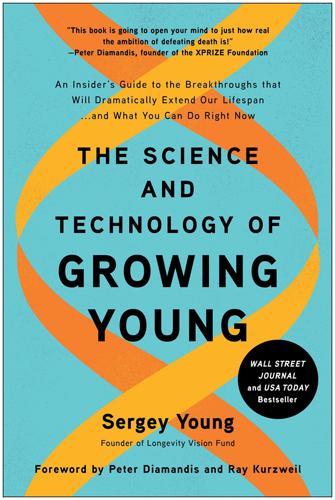
The Science and Technology of Growing Young: An Insider's Guide to the Breakthroughs That Will Dramatically Extend Our Lifespan . . . And What You Can Do Right Now
by
Sergey Young
Published 23 Aug 2021
Finally, you will receive practical advice on how to optimize your habits for longevity. You already have the opportunity to add a decade or two to your life. Many of you will live to see 100 or 120 years of age. We are only a few decades away from “longevity escape velocity,” so once we make it through the next couple of decades, we will have the knowledge to overcome whatever problems we will encounter. Eventually, everyone will be able to achieve longevity escape velocity and defeat death altogether. Solving the problem of aging is the biggest and most worthwhile endeavor the human race has ever tackled. It is an enormous challenge. But technology development is all about making the impossible possible.
…
But to cross over from “living longer” to “living forever,” we return to the longevity escape velocity model from David Gobel and Aubrey de Grey that we first visited in chapter one. If this concept was new to you then, my guess is that you found it to be a somewhat arcane and “kooky” intellectual theory. My hope is that knowing what you know now about the very real scientific advancements of the Near Horizon of Longevity, you can see how very reasonable this theory actually is. To refresh your memory, longevity escape velocity proposes that life expectancy will continue to rise with advances in science and technology until each year of scientific research and technological development will add one year to our average life expectancy.
…
Stem cell treatments and cellular reprogramming have delivered astonishing age-reversal and life-extension outcomes in animal trials and may be possible in humans before too long. Next-generation diagnostic devices that can continuously monitor your body for signs of disease are improving by the year. Somewhere along the timeline between tomorrow and longevity escape velocity, you will be able to grow young with the aid of these astonishing new technologies. Whether longevity escape velocity and biological immortality are genuinely reachable or not, living to at least age one hundred is within reach for most people on the planet today. In the United States, 50 percent currently make it past eighty-three years old and 25 percent past ninety.

The Future Is Faster Than You Think: How Converging Technologies Are Transforming Business, Industries, and Our Lives
by
Peter H. Diamandis
and
Steven Kotler
Published 28 Jan 2020
The company’s mission is to make this approach viable in humans, harnessing stem cells to amplify the body’s ability to fight disease and heal itself. What does all this add up to? Well, Ray Kurzweil often discusses the concept of “longevity escape velocity,” or the point at which science can extend your life for more than a year for every year that you are alive. As far future as this sounds, according to Kurzweil, we are a lot closer than you might expect. “It’s likely [that we’re] just another ten to twelve years away from the point that the general public will hit longevity escape velocity.” We are creeping ever closer to a technological fountain of youth. Thus, the impact that each of us can make with a couple more decades is another force accelerating our acceleration.
…
Some cells become unresponsive, others become inflammation-producing zombie cells. This inflammation blocks further communication. Once this happens, messages can’t get through and the immune system can’t find pathogens. And now that we know what’s killing us, let’s see what just might be saving us. Longevity Escape Velocity Want to win a Nobel Prize? Study worms. And don’t just study any worm. Study the roundworm, Caenorhabditis elegans, or, as her friends call her, C. elegans. And this worm has a lot of friends. Six scientists have already taken home Swedish gold for their work on the creature. As a result, C. elegans was the first organism to have its genes sequenced, its whole genome screened, and its connectome, the wiring diagram of the brain’s neurons, mapped.
…
The old direction was our thirty-year lifespan, which held constant from the Paleolithic Age to the front end of the Industrial Revolution. During the twentieth century, marvels such as antibiotics, sanitation, and clean water extended our average age to forty-eight years by 1950, then to seventy-two years by 2014. But these days, Ray Kurzweil and longevity expert Aubrey de Grey have begun talking about “longevity escape velocity,” or the idea that soon, science will be able to extend our lives by a year for every year we live. In other words, once across this threshold, we’ll literally be staying one step ahead of death. Kurzweil thinks this threshold is about twelve years away, while de Grey puts it thirty years out.

The Singularity Is Nearer: When We Merge with AI
by
Ray Kurzweil
Published 25 Jun 2024
One of the main challenges of high-rise construction is getting people and building materials to the upper floors. A 3D-printing system, together with autonomous robots that can use building materials pumped up from ground level in liquid form, will make this process far easier and less expensive. Diligent People Will Achieve Longevity Escape Velocity by Around 2030 Material abundance and peaceful democracy make life better, but the challenge with the highest stakes is the effort to preserve life itself. As I describe in chapter 6, the method of developing new health treatments is rapidly changing from a linear hit-or-miss process to an exponential information technology in which we systematically reprogram the suboptimal software of life.
…
The 2020s will feature increasingly dramatic pharmaceutical and nutritional discoveries, largely driven by advanced AI—not enough to cure aging on their own, but sufficient to extend many lives long enough to reach the third bridge. And so, by around 2030, the most diligent and informed people will reach “longevity escape velocity”—a tipping point at which we can add more than a year to our remaining life expectancy for each calendar year that passes. The sands of time will start running in rather than out. The fourth bridge to radical life extension will be the ability to essentially back up who we are, just as we do routinely with all of our digital information.
…
These often seem to happen spontaneously—not as a result of lifestyle factors or any disease onset. The body apparently just starts breaking down. Over the past decade, scientists and investors have started giving much more serious attention to finding out why. One of the leading researchers in this field is biogerontologist Aubrey de Grey, founder of the LEV (Longevity Escape Velocity) foundation.[98] As de Grey explains, aging is like the wear on the engine of an automobile—it is damage that accumulates as a result of the system’s normal operation. In the human body’s case, that damage largely comes from a combination of cellular metabolism (using energy to stay alive) and cellular reproduction (mechanisms for self-replication).

To Be a Machine: Adventures Among Cyborgs, Utopians, Hackers, and the Futurists Solving the Modest Problem of Death
by
Mark O'Connell
Published 28 Feb 2017
(You would not by any means be the first person to think here of Pascal’s Wager.) “Personally,” said Max as we made our way through the patient care bay toward the exit, “I’m hoping to avoid having to be preserved. My ideal scenario is I stay healthy and take care of myself, and more funding goes into life extension research, and we actually achieve longevity escape velocity.” He was referring here to the scenario, projected by the life extension impresario Aubrey de Grey, a scientific advisor at Alcor, whereby for every year that passes, the progress of longevity research is such that average human life expectancy increases by more than a year—a situation that would, in theory, lead to our effectively outrunning death.
…
Max and Natasha Vita-More had both spoken approvingly of his work, as had Randal Koene; he had been the subject of a handful of books and documentaries, and of a profusion of variously credulous and dismissive newspaper articles. Among the ideas he had popularized (through, among other channels, a widely consumed 2005 TED talk) was something referred to as “longevity escape velocity.” This was the notion that the pace of technological advancement in the area of life extension would eventually increase to the point that, for every year that passes, average human life expectancy increases by more than a year—at which point, the theory goes, we put a comfortable distance between ourselves and our own mortality.
…
Over the past century or so, life expectancy had been increasing at the rate of about two years per decade, but the optimistic expectation within the life extension movement was that we would soon reach a point where the ratio flipped—thereby, as de Grey put it, “effectively eliminating the relationship between how old you are and how likely you are to die in the next year.” This idea of longevity escape velocity was something like an article of faith among transhumanists and life extension enthusiasts. It was an idea that Max More, for instance, had raised a number of times when I spoke with him—as the source of his hope, for instance, that he would not himself have to rely on the fallback of cryonic suspension to ensure the radical extension of his own life.
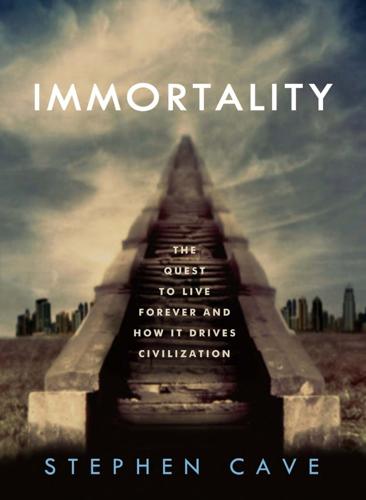
Immortality: The Quest to Live Forever and How It Drives Civilization
by
Stephen Cave
Published 2 Apr 2012
And in this time, we could be developing the technology that could buy us yet more decades; and in those decades, we could then achieve the breakthroughs that would give us another century—and so on, until the discovery is made that can grant us medical immortality. This is what the optimistic transhumanists describe as achieving “longevity escape velocity,” or living long enough to live forever. THE transhumanists have various strategies for breaking down the problems of mortality into manageable chunks. One prominent advocate, the gerontologist Aubrey de Grey, has suggested that there are exactly seven problems that must—and can—be solved for humans to achieve indefinite youth.
…
I, AVATAR MUCH of the energy of those inspired by this narrative is spent on research that offers to extend our days—that is, the pursuit of staying alive. But, as Victor Frankenstein recognized, the real prize for those who could learn to subjugate nature is not simply postponing death; it is the power of resurrection—bringing the dead back to life. After all, although some might hope to achieve the “longevity escape velocity” we met in chapter 3, many will recognize that there is a good chance that nature will get them before science has completed its conquering. Luckily, the narrative of endless progress reaches even beyond the grave. We saw in chapter 4 that resurrecting the dead requires something extraordinary; it is not as easy as a certain energy company inadvertently suggested when they wrote to one recently deceased customer, “We are very sorry to lose your valued custom.
…
“WISDOM GIVETH LIFE” (Ecclesiastes 7:12) THE difference between those who swallow 250 dietary supplements per day and the rest of us is not that they will live forever and we will not. No: we will all die, even the transhumanists. The difference is that they tell themselves a story about achieving “longevity escape velocity,” which helps them to alleviate their existential angst. They are therefore following a long tradition of elixir seekers, resurrectionists, reincarnationists and others who have attempted to deny the fact of death. Most of this book has been concerned with exploring how these immortality narratives have shaped civilization—for good and ill—and whether they have any plausibility.
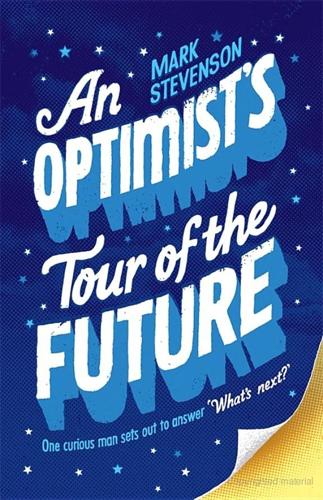
An Optimist's Tour of the Future
by
Mark Stevenson
Published 4 Dec 2010
Daniel 160, 164 Hitchhiker’s Guide to the Galaxy, The 100 Hoek, Eric 118 Hofmeister, Anke 261–2 Hofstadter, Douglas 276 Holbrook 221–2, 239–40 Huggable 78 Human Security Brief 148 Huntington’s disease 44, 58 Huxley, Julian 13 I IBM 113, 125 identical twins 43 Imperial College London 31, 213 indium 195–6 Industrial Revolution 110, 115, 167, 171, 284–5 inequality 302 influenza virus 64–5, 69–70 Insomnia Cookies 93–4 Institute for Health Metrics and Evaluation 149 Institute of Bioengineering and Nanotechnology 69 Intelligent, Safe and Smart Built (ISSB) 119 interconnectedness Internet 151–8 nonzero-sum game 149–51 telegraph 145–7 and violent deaths 149 Intergovernmental Panel on Climate Change (IPCC) 171, 172, 179, 180 International Association Synthetic Biology 68 International Gene Synthesis Consortium 68 Internet 147, 151–64, 268, 302 invariants 99 Iran 157 Isasi, Rosario 27 IVF 106 J Jackson, Ron 64 Jones, Richard 120–1, 124, 130 Joule Biotechnologies 57, 186–8, 189 JSB see Brown, John Seely Jungerbluth, Philip 20 Jurassic Park 39, 75 K Kahn, Bob 153, 159 Kármán line 133 Kasparov, Garry 82, 83, 86 Katter, Bob 171 Keeley, Lawrence 147 Keeling, Charles David 167 Keith, David 184 Kelly, Kevin 161 Kench, Paul 242 Kessler, Andy 43 Klein, Naomi 303 Kleinrock, Leonard 152 Kline, Charley 152 Knome 50 Konarka 190–1, 196–204, 206, 224, 295, 299 Kossel, Albrecht 37 Krummel, Glen 228 Kukla, George 178–9, 186 Kunfunadhoo Island 261–2, 266 Kurzweil, Ray 90, 267–78, 282, 293, 299, 303–4 and Brown, John Seely 285 posthumans 103–4, 268 The Singularity 88 transhumanism 21–2, 267–8 Kyrgyzstan 157 L Lackner, Klaus 173, 174–86, 188, 189, 259–60, 299, 301 Lana 224–5 Langley, Tim 212–19 Law of Accelerating Returns 51, 270–8, 293 Leber’s congenital amaurosis (LCA) 59–60 Legion of Extraordinary Dancers 155, 158, 294 Lehmann, Johannes 209–10 Leo 73–4, 75–6, 79, 80–2, 84–6, 102 Lewis, Dan 203 Licht, Stuart 184 life expectancy 12–13, 301 and income 27–8 longevity escape velocity 29–30 limited liability corporations 290–1 Lincoln, Abraham 265–6 Lipson, Hod 92, 94–6, 98–101, 102, 210, 272–3, 293, 299 longevity escape velocity 29–30 López, José 117 Lovell, Tony 222–40, 300 Lovelock, James 164, 172, 220 biochar 208–9, 210, 215 LS9 56–7, 61 Lynx spaceplane 142 M Maahlos 261 McConnell, James 17 MacDiarmid, Alan 196 ‘Machine Stops, The’ (Forster) 161 McNamara, Kaitlyne 20–1 Maes, Pattie 162–3 Maldives 241–62 Malé 249–50 Malthus, Thomas Robert 250 ‘Manchester Report, The’ 223, 224 Markram, Henry 90, 91 Martine, George 252–3 Masten Space Systems 136 Matrix, The 103 men life expectancy 12, 23 pregnancy 24 methane 230 Methuselah Foundation 21 Mexico 278–9 Miescher, Johannes Friedrich 37 Miller, Webb 41 Minsky, Marvin 102, 104 Miromatrix Medical 20 MIT 40, 262 Fluid Interfaces Group 162–3 Media Lab 77–8 nanotechnology 201 Smart Cities Group 200 Technology Review 16, 187 Mitchell, Bill 200 Mojave 131–3, 135–44 Monbiot, George 215, 303 Moombril 221–2, 239–40 Moore, Michael 303 Moorhead, Paul 18 Moravec, Hans 74, 84, 89–90 Morgan Stanley 193 Mosely, Andrew 231–5 Mosely, Megan 231–5 Mouchot, Augustin 192–3, 266 mousepox 63–4 Musk, Elon 136, 141 Myhrvold, Nathan 16 N Najning University 120 nanofactories 114–17, 125–6, 286 Nanoforum 120 nanoparticles 287 nanopunk 117 Nanosolar 202–3 Nanosystems (Drexler) 112, 124 nanotechnology 107, 108–30, 268, 301, 302 apocalypse 125–7 and energy 201 Grey Goo 121–3 products 117–21 Narrandera 237–8 NASA 134, 135, 136, 141, 170 Nasheed, Mohamed 243–9, 254–60, 262 National Academy of Engineering 125 National Academy of Sciences 125 National Center for Atmospheric Research 176 National Center for Biotechnology Information (NCBI) 64–5 National Human Genome Research Institute 36 National Research Council 125 National Science Advisory Board for Biosecurity 67–8 natural language 86–7 Nature 170 Near-Earth Asteroid Rendezvous (NEAR) 134 New Scientist 68 New York 172 New York University 120 New Zealand 206–20 New Zealand Wind Farms 208 Nexi 102 Niven, Larry 135 nonzero-sum games 149–51, 153–4, 270 Northwest Passage 177–8 Nouri, Ali 65 nuclein 37 O oil 193 Olovnikov, Alexey 52–3 Olshansky, Stuart Jay 12 oncogenes 46–7 optical telegraph 145–6 Optimist (cocktail) 220 organic conductive polymers 196–7, 198, 201 ornithine transcarbamylase deficiency 58–9 Ott, Harold 20 over-population 17–18 P Pakistan 157 Pan Am 133 parabolic surfaces 192 Parkinson’s disease 273–4 Partners in Health (PIH) 202 Personal Genome Project (PGP) 37, 42–3, 47–50, 51, 273 Personal Robots Group 73–4, 75–6, 77–82, 84–6, 102 Pew Charitable Trusts 119 Pew Research Center 168 phenylketonuria 44, 58 Picton 214–15, 217–18, 220 Pifre, Abel 192 Pinatubo, Mount 169 Pinker, Steven 83, 147, 149, 293 Pirbright Laboratory 68 Pistorius, Oscar 29, 300 Pleasance, Erin 40–1 Polonator G.007 50 Pontin, James 16 Popular Science Monthly 192 population 17–18, 249–54 pornography 158 Portugal 234–5 Power Plastic 196–7, 198, 204, 224 Prey (Crichton) 122 procreative beneficence 23 Project on Emerging Nanotechnologies 119 proteins 45–6 ProtoLife 66 Pygmalion (Shaw) 86 pyrolysis 209–10, 212–14 R Ranchos de Taos, New Mexico 234 Rankin, Sarah 31 Rasmussen, Lars 256 Rebek, Julius 124 reflection 86 Regis, Ed 112 Reicher, Dan 194–5 Rema 199 Reporters Without Borders 157 Revue des Deux Mondes 192 Rice University 118–19, 201 Ridley, Matt 270, 302–3 Roberts, Lawrence 152 Roberts, Paul 244, 248, 254 Robinson, Ken 265–6, 284, 288, 293 robots 73–92, 302 Leo 73–4, 75–6, 79, 80–2, 84–6 Nexi 102 Starfish 95–6, 98–9 Rofecoxib 49 Rosenthal, Elisabeth 254 Rosling, Hans 251, 254, 293 Rothemund, Paul 119, 120 Ruddiman, William 230 Rumsfeld, Donald 172 Rutan, Dick 140–1, 142, 143 S Sanger Institute 40–1, 51 Saudi Arabia 157 Savory, Allan 221, 226–7, 232 Savulescu, Julian 23 scalable efficiency 286 Scaled Composites 136, 139, 142 Schmidt, Michael 98, 99, 273 Schöni, Peter 220 Schuster, Stephen 41 Schweizer, Erhard 113 scientific method 96–8 self-replication 121–3 senescence 18, 53–4 Shadow Robot Company 74–5 Sharkey, Noel 76–7 Sharpe, Tom 256 Shaw, George Bernard 86 Shawcross, Lord 215 Shew, Ashley 109–10 Shirakawa, Hideki 196 Shivdasani, Eva 261 Shivdasani, Sonu 261 Siemens 193 silicon cells 195–7 Singularity 88, 268 Singularity is Near, The 268, 269, 271 Six Million Dollar Man, The 14 SixthSense 162–3 Skordalakes, Emmanuel 52, 53 Smalley, Richard 111, 122, 123, 201 SmartHand 103 Smolker, Rachel 216 Snider, Wayne 200 Socrates 96–7, 99 soil carbon 228–31, 233–5, 236–7, 238 soil charcoal 213–14 solar energy 190–1, 192–3, 194–205, 206, 274, 295, 302 Solar Thermal Electrochemical Photo Carbon Capture 184 Solarbuzz 205 Soneva Fushi 261–2 space 133–44, 302 Space Frontier Foundation 134 SpaceShipOne 135–6 SpaceShipTwo 136, 139, 142 SpaceX 136, 141 Sparrow, Rob 23–4 Speedy, Barb 218 Spielberg, Steven 75 Stan Winston Studio 75 Standage, Tom 146–7 Stanford University 20 Star Wars 76, 83, 102 Starfish 95–6, 98–9 Stark, Philip 158 Stellenbosch University 118 stem cells 19–21, 31, 301 Stiehl, Dan 78–9 Stoppard, Tom 281 Strong, Graham 237–8 StubbyGlove 228 Suel, Gurol 273 Suh, Yousin 53 Sun Tzu 40–1, 51–2 surveillance 127, 129 synthetic biology 55–8, 70 bacteria 56–8 bioterrorism 63–6, 68 control 66–70 genome engineering 60–3 viral gene therapy 58–60 Synthetic Genomics 56 Syria 157 Szostak, Jack 18 T Taylor, Doris 20 TED (Technology, Entertainment, Design) 14, 153, 265–6, 291–5 Tefera, Elfenesh 199 telegraph 145–7, 297, 301 tellurium 195–6 telomerase 18–19, 45, 52–4 Terminator, The 76, 78, 103, 302 Tetrahymena 18 Thornton, Edward 146 thymine 37–9, 46 Toffler, Alvin 289 Tofu 79 transhumanism 13–18, 21–34, 45, 52–4, 267–8 transplants 19–21 Treder, Mike 126–7 tribes 155–6 Tripathy, Sukant 199 truth 96–8 Tsiolkovsky, Konstantin 114, 116, 125, 128 Tufts Center for the Study of Drug Development 49 Tumlinson, Rick 133–4 Turing, Alan 88 Turkmenistan 157 Turney, Chris 213 twins 43 U underwater cabinet meeting 241–2, 245, 246–9, 258 Ungar, Georges 17 United Nations (UN) biosafety 68 Livestock’s Long Shadow 230 population 252 State of the World’s Forests 253 World Urbanisation Prospects 250 United States biofuels 187 carbon dioxide 184 electricity 285 global warming 168 oil 187, 188 science 279–80 space programme 134, 136 University of Bradford 149 University of Bristol 20 University of British Columbia 148 University of California 118–19 University of Maryland 201 University of Minnesota 20 University of Regensburg 125 University of Washington, Center for Conservation Biology 40 Uppsala University 148 Uzbekistan 157 V Venter, Craig 36, 47, 50, 56, 57, 58, 279 Vietnam 157 Vinsen, Mark 211–12 violence 147–51, 302 and interconnectedness 157–8 and Internet 244–5 and nanotechnology 126–7 Vioxx 49 viral gene therapy 58–60 Virgin Galactic 135–6, 141 vitrification 15 Voltaire 218 Voyager 140 W Wake Forest Institute for Regenerative Medicine 20 Wall-E 76 Ward, Bruce 222–40, 259, 300 wars 147–9 Watson, James 56 Web 154–5 Weitz, David 51 Weizenbaum, Joe 86 Weldon, Larry 190–1, 196–7 Wellcome Trust Sanger Institute 40–1, 51 Wemett, Tracy 190, 197, 204, 267, 276, 297 Wired 61, 112, 159 Witt, Stuart 137–40, 143, 144 women 23–4 Wonder, Stevie 269 wood gas 209 Woodrow Wilson International Center for Scholars 119 World Health Organisation 68, 69–70, 148, 149 World Transhumanist Association 25 worldchanging.com 158 Wright, Allen 179, 180 Wright, Burt 179, 180 Wright, Karen 224–5 Wright, Orville 132–3 Wright, Robert 149–51, 156, 158, 270, 293 Wright, Tim 224–5 Wright, Wilbur 132–3 X Xcel Energy 199, 200 XCOR Aerospace 136, 141–2 Y YouTube 155, 157, 294 Z Zhang, Jin 118 Zimbabwe 221, 226 Zittrain, Jonathan 153 Ziyad, Mohamed 254, 255–6 Zykov, Victor 95 * An interesting coda to Claudia’s story is that she nearly didn’t get her operation.
…
Will I buy a new body part grown from my own stem cells to keep me young? How far can this go? How long can I live? How enhanced could I be? Nick Bostrom suggests that the answers to these last two questions could respectively be ‘a very long time’ and ‘as much as you like.’ Take, for instance, the idea of ‘longevity escape velocity,’ seen by many transhumanists as one of the more convincing arguments for the prospect of immortality. This is the proposition that instead of our life expectancies gaining a quarter of a year for every year that passes, we reach a point where medical advances raise our life expectancy by over a year for every year that goes by.

Immortality, Inc.
by
Chip Walter
Published 7 Jan 2020
De Grey didn’t pretend that his prescriptions would be perfect; they just had to be good enough to slow and eventually reverse aging so that people who remained healthy at 70 would live youthfully to 150, at which time more advances would allow them to live to 300 until still more came, and so forth. Somewhere along the line, the really Big Breakthroughs would reverse aging altogether. He called this theory “longevity escape velocity.” You would die, of course, eventually, because statistically something was going to get you: a bolt of lightning, abduction by aliens, a spouse who simply couldn’t stomach the idea of celebrating her 950th wedding anniversary with the same person. But for all intents and purposes, life everlasting was possible.
…
Venter, though he was pretty certain de Grey was not the knight errant of everlasting life, felt that supporting de Grey’s point of view at least ensured that those who thought outside the box could get a shot at being heard and debated. That’s what science needed. Maybe de Grey’s prescriptions for longevity escape velocity or engineered negligible senescence made sense; maybe they didn’t. But that wasn’t the point. The point was to do the experiment! Soon enough, there would be plenty of those to follow. 14 | DON’T F*CK UP When Art Levinson began considering the remarkable proposition that Larry Page had made to him that October night in 2012, he knew his knowledge of aging and how it worked was just short of zero.
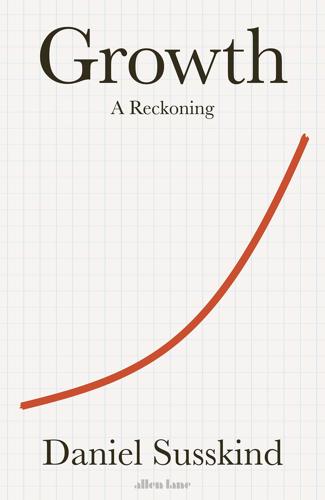
Growth: A Reckoning
by
Daniel Susskind
Published 16 Apr 2024
But the most compelling complaint remains one of the simplest: in short, ‘we have no idea what the future will be like’.16 John Maynard Keynes famously quipped that ‘in the long run, we are all dead’. But perhaps, if we have in mind the long-termists’ conception of the long run, he is wrong. If the ‘life-extension’ movement is right about the distant future, for instance, we might eventually reach ‘longevity escape velocity’, living long enough for medicine to learn how to cure all diseases, replace faulty organs, regenerate cells and keep a person alive for ever or until the end of time.17 Alternatively, if the ‘transhumanist’ movement is right about the distant future, we may not need our ‘meat machines’ indefinitely, but at some point will shuffle off our mortal coil by uploading our minds to some piece of immortal hardware and exist there for ever more.
…
lang=en (accessed 21 April 2023). 13 William MacAskill, What We Owe the Future (London: Oneworld, 2022). 14 MacAskill, What We Owe the Future. 15 MacAskill, What We Owe the Future, p. 9. 16 Regina Rini, ‘An Effective Altruist?’, Times Literary Supplement, 9 September 2022. 17 Peter H. Diamandis and Steven Kotler, ‘We Are Nearing “Longevity Escape Velocity’, MarketWatch, 25 February 2020. 18 Rini, ‘An Effective Altruist?’. 19 MacAskill, What We Owe the Future, p. 149. 20 Thought inspired by noahpinion.substack.com/p/the-metaverse-and-near-infinite-economic. For a deeper conversation, see Anders Sandberg and David Manheim, ‘What is the Upper Limit of Value?’

Ageless: The New Science of Getting Older Without Getting Old
by
Andrew Steele
Published 24 Dec 2020
That would mean, on average, our date of death would be receding into the future as fast as we were all chasing it. If we can keep up this pace of innovation, that could continue to be true into the indefinite future – and it would be a de facto cure for ageing. This idea is sometimes called ‘longevity escape velocity’. Whether a one-year-per-year increase in life expectancy is possible in a time frame which might be relevant to humans alive today is impossible to predict, and most scientists wouldn’t blame you for being sceptical of its plausibility. However, the idea of developing treatments which buy us time to develop more and better treatments changes the nature of the challenge when it comes to adding substantial amounts to life expectancy, or even, one day, curing ageing entirely.
…
S., here Hallmarks of Aging, here hamsters, here hand-washing, here Hayflick, Leonard, here, here health and social care, here ‘healthspan’, here, here hearing loss, here heart disease, here, here, here, here, here, here, here, here, here, here, here, here, here, here, here, here and amyloids, here, here, here, here and lifestyle, here, here, here, here heart rate, here, here heartbeats per lifetime theory, here Helicobacter pylori, here hepatitis C, here herpesviruses, here, here HIV, here, here, here homeostasis, here hominins, here Horvath, Steve, here, here Human Genome Project, here human papillomavirus (HPV), here hunter-gatherer societies, here Huntington’s disease, here, here, here, here Hutchinson–Gilford progeria, here hydra, here hypothalamus, here immune system, here, here, here, here, here, here, here, here, here, here, here, here rejuvenation, here, here see also inflammation immunosuppressants, here, here, here industrialisation, here infant and child mortality, here, here, here inflammation, here, here, here, here, here, here, here and lifestyle, here, here, here, here, here inflammatory bowel disease, here insulin, here, here, here, here, here, here interleukin-6, here International Classification of Diseases (ICD), 32 Johnson, Tom, here Kenyon, Cynthia, here, here Klass, Michael, here, here Klotho gene, here, here Laron syndrome, here, here leukaemia, here, here, here Lewy bodies, here LHON (eye disease), here life, three-stage, here life expectancy, here, here, here, here, here, here, here, here and Laron syndrome, here and lifestyle, here and Parkinson’s disease, here lipofuscin, here, here liver disease, here, here, here longevity heritability of, here, here ‘longevity escape velocity’, here longevity genes, here lung cancer, here, here lung disease, here, here, here, here, here, here, here lupus, here lymph nodes, here, here lysosomal storage disorders (LSDs), here lysosomes, here McCay, Clive, here, here, here macular degeneration, here, here, here, here Maillard reaction, here malaria, here, here manganese peroxidase, here mayflies, here measles, here melanocytes, here melanoma, here metformin, here, here, here, here, here mice, here, here, here, here, here, here, here, here, here and antioxidants, here and cell signalling, here cloning experiments, here collagen longevity, here and dietary restriction, here, here, here, here, here and DR mimetics, here gut microbiome, here, here heart rate, here and immune system therapies, here, here, here and longevity genes, here, here, here mitochondria, here and mitochondrial therapies, here mouse models, here and p53 gene, here and parabiosis, here, here, here and plasma transfusions, here and senescent cell research, here and stem cells, here, here, here telomerase levels, here, here, here microRNA, here mitochondria, here, here, here, here, here, here, here mitochondrial free radical theory, here, here mitolytics, here mitophagy, here MitoQ, here, here Moore’s Law, here mortality, extrinsic vs. intrinsic, here motor neurone disease, here mouse lemurs, here mouse-eared bats, here, here mTOR, here, here multiple sclerosis (MS), here muscle mass, loss of, here, here, here mutation accumulation theory, here Mycobacterium tuberculosis, here Mycoplasma genitalium, here naked mole-rats, here, here, here National Institute on Aging (NIA), here National Institutes of Health, here, here, here navitoclax, here negative senescence, here negligible senescence, here nematode worms, here, here, here, here, here, here, here, here, here, here, here neurons, here, here, here, here dopaminergic, here, here NOTCH1 gene, here obesity, here oestrogen, here Ohsumi, Yoshinori, here Okinawans, longevity of, here Olympic athletes, here Orgel, Leslie, here osteoarthritis, here, here, here osteoblasts, here osteoporosis, here, here, here oxidation, here oxytocin, here, here p53 gene, here, here pandemics, here see also coronavirus parabiosis, here, here, here Parkinson’s disease, here, here, here, here, here, here, here, here and mitochondria, here, here and stem cell therapies, here, here, here PCSK9 inhibitors, here pensions, here, here Peto, Richard, here pets, and ageing, here pine trees, here plasma transfusions, here, here Plasmodium, here Plato, here population, global, here prebiotics, here preeclampsia, here prehistory, here, here, here probiotics, here progerias, here proteins, here, here, here, here plant proteins, here see also amyloids; collagen PRX004, here quantum computing, here Rapa Nui (Easter Island), here, here rapalogues, here rapamycin, here Rapu, Alphonso, here rate-of-living theory, here rats, here, here, here and parabiosis, here, here reactive oxygen species (ROS), here, here renewal tissues, here reproductive success, here, here, here, here, here resveratrol, here retirement, here rhesus macaques, here, here, here risk factors, here RTB101, here sabbaticals, here salamanders, here sarcopenia, see muscle mass, loss of SASP (senescence-associated secretory phenotype), here, here, here, here, here, here Sehgal, Suren, here selenium, here senescent cells, here, here, here, here, here, here, here, here and lifestyle, here removal of, here, here, here, here, here, here and shortened telomeres, here, here see also SASP senile systemic amyloidosis (SSA), here senolytics, here, here, here, here, here, here, here, here senomorphics, here SERPINE1 gene, here sex chromosomes, here sex hormones, here Shapiro, Amy, here shingles, here skin, sun-exposed, here, here, here sleep, here, here smallpox, here smell, loss of, here, here smoking, here, here, here, here Socrates, here Solomon, Beka, here spermidine, here, here Stargardt disease, here stem cells, here, here, here, here, here, here, here and epigenetic age, here in practical roles, here therapies, here, here, here and thymus rejuvenation, here see also haematopoietic stem cells (HSCs) sterilisation, here Strategies for Engineered Negligible Senescence (SENS), here, here stroke, here, here, here, here, here, here, here, here, here, here and lifestyle, here, here, here, here subcutaneous fat, here, here sudden death syndrome, here sunscreen, here supercentenarians, here synbiotics, here systems biology, here Szostak, Jack, here T cells, here, here, here, here TA-65, here taste, loss of, here tau protein, here, here teeth, here, here, here from stem cells, here telomerase, here, here, here, here, here, here, here telomeres, here, here, here, here, here, here, here, here, here, here, here, here and Dolly the sheep, here teratomas, here, here testicles, implantation of animal, here testosterone, here Tetrahymena, here, here, here TGF-beta, here thermodynamics, here, here Thiel, Peter, here thymus, here, here, here, here tortoises, here, here, here, here, here heart rate, here transdifferentiation, here transthyretin (TTR), here, here tuberculosis, here turquoise killifish, here Turritopsis dohrnii jellyfish, here turtles, here ultraviolet light, here, here, here urolithin A, here, here vaccines, here, here, here, here, here, here, here vampires, here van Leeuwenhoek, Antonie, here Victoria, Queen, here visceral fat, here vitamins, here, here Wallace, Alfred Russel, here, here water fleas, here Weismann, August, here Werner syndrome, here West, Mike, here whales, here, here, here whooping cough, here X-rays and DNA damage, here, here in medical and veterinary investigations, here, here Yamanaka, Shinya, here, here, here, here, here Yamanaka factors, here, here, here, here yeast, here, here, here, here, here zombies, here, here, here, here A NOTE ON THE AUTHOR After obtaining a PhD in physics from the University of Oxford, Andrew Steele decided that ageing was the most important scientific challenge of our time, and switched fields to computational biology.

Architects of Intelligence
by
Martin Ford
Published 16 Nov 2018
MARTIN FORD: One of the areas where you’ve talked a lot about the singularity having an impact is in medicine and especially in the longevity of human life, and this is maybe one area where you’ve been criticized. I heard a presentation you gave at MIT last year where you said that within 10 years, most people might be able to achieve what you call “longevity escape velocity,” and you also said that you think you personally might have achieved that already? Do you really believe it could happen that soon? RAY KURZWEIL: We are now at a tipping point in terms of biotechnology. People look at medicine, and they assume that it is just going to plod along at the same hit or miss pace that they have been used to in the past.
…
This is a huge bright spot in cancer treatment, and there are remarkable trials where virtually every person in the trial goes from stage 4 terminal cancer to being in remission. Medicine is going to be profoundly different in a decade from now. If you’re diligent, I believe you will be able to achieve longevity escape velocity, which means that we’ll be adding more time than is going by, not just to infant life expectancy but to your remaining life expectancy. It’s not a guarantee, because you can still be hit by the proverbial bus tomorrow, and life expectancy is actually a complicated statistical concept, but the sands of time will start running in rather than running out.

The Economic Singularity: Artificial Intelligence and the Death of Capitalism
by
Calum Chace
Published 17 Jul 2016
Most people spend a certain amount of time each week visiting family, friends and neighbours who are unwell, just to converse. Sick and disabled people are greatly comforted by their relationships with talking AI companions, some resembling humans, others resembling animals. Significant funds are now allocated to radical age extension research, and there is talk of “longevity escape velocity” being within reach – the point when each year, science adds a year to your life expectancy. Most forms of disability are now offset by implants and exoskeletons, and cognitive enhancements through pharmaceuticals and brain-computer interface techniques are showing considerable promise. 14.
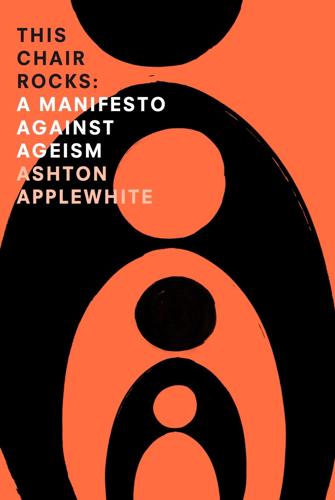
This Chair Rocks: A Manifiesto Against Ageism
by
Ashton Applewhite
Published 10 Feb 2016
Leading the pack are the proponents of radical life extension who think that advances in biotechnology will soon be able to slow down or turn back the biological clock, and that my generation can anticipate living far longer than our parents. Many proponents believe that what biomedical researcher Aubrey de Grey calls “longevity escape velocity” is within reach: the point at which, for every year that passes, life expectancy will increase by one year, making lifespans infinite. The last century’s unprecedented increase in human lifespan does indeed put us on new evolutionary footing. When Dutch gerontologist Dr. Rudi Westendorp spoke at New York’s Mount Sinai Hospital about good health after eighty-five, he opened with a zinger: “There is no biological limit to human age.

Rule of the Robots: How Artificial Intelligence Will Transform Everything
by
Martin Ford
Published 13 Sep 2021
Despite his distinguished career as an inventor, Kurzweil now tends to be perceived primarily as a futurist with a reasonably well-formulated theory about long-term technological acceleration, but also some seemingly outlandish—some might even say kooky—ideas about where all this progress is, in his view, likely to lead. By one account, Kurzweil takes one hundred or more supplement pills each day in the hope of prolonging his life.33 Indeed, he believes he has already achieved “longevity escape velocity”—or in other words, he expects to repeatedly live long enough to take advantage of the next life-prolonging medical innovation.34 Do this indefinitely, while avoiding a run-in with the proverbial bus, and you will have achieved immortality. Kurzweil told me that within about ten years, such a plan should be accessible to the rest of us.
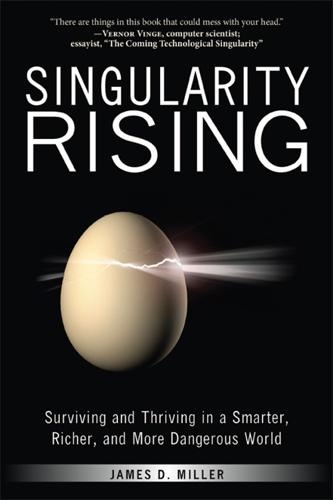
Singularity Rising: Surviving and Thriving in a Smarter, Richer, and More Dangerous World
by
James D. Miller
Published 14 Jun 2012
Peter told me he thinks he has a 10 to 15 percent chance of surviving for at least another thousand years.314 Envy would consume me if Peter’s wealth gave him vastly better odds than I have of surviving until the next millennium. But chances are that if Peter is alive a thousand years from now, many of his contemporaries will be also. Peter backs the Methuselah Foundation, an organization striving to slow down aging by propelling mankind to a “longevity escape velocity” in which every year, medical science figures out how to increase the human life span by more than one year. Oracle cofounder Larry Ellison, one of the few men whose wealth Peter might envy, also wants to live a long, long time. To further this end, Ellison has donated an estimated $100 to $200 million to anti-aging research.315 If billionaires aged differently than college professors, or if the cure for aging was in creating high-marginal-cost medical treatments, then Ellison and Thiel would have much greater expected life spans than I would.

Rise of the Robots: Technology and the Threat of a Jobless Future
by
Martin Ford
Published 4 May 2015
Indeed, this intellectual amplification is seen as essential if we are to understand and maintain control of technology beyond the Singularity. Perhaps the most controversial and dubious aspect of Kurzweil’s post-Singularity vision is the emphasis that its adherents place on the looming prospect of immortality. Singularians, for the most part, do not expect to die. They plan to accomplish this by achieving a kind of “longevity escape velocity”—the idea being that if you can consistently stay alive long enough to make it to the next life-prolonging innovation, you can conceivably become immortal. This might be achieved by using advanced technologies to preserve and augment your biological body—or it might happen by uploading your mind into some future computer or robot.
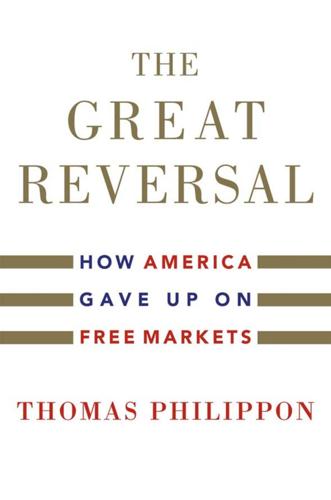
The Great Reversal: How America Gave Up on Free Markets
by
Thomas Philippon
Published 29 Oct 2019
But fintech innovations will not automatically enhance stability or democratize access to financial services. If we want to reap the benefits from better technology in finance, we need financial regulators who can stand up to the lobbies. CHAPTER 12 American Health Care A Self-Made Disaster People in middle age now have a fair chance of getting to Longevity Escape Velocity. AUBREY DE GREY Those in midlife now are likely to do worse in old age than the current elderly. ANNE CASE AND ANGUS DEATON NOTHING BETTER HIGHLIGHTS the clash between economists and techno-optimists than the topic of health. It is a sad irony that precisely at the time when scientists are beginning to argue that it is technologically plausible to prolong human life indefinitely, the US is experiencing the first peacetime decline of life expectancy of any democratic nation since the Industrial Revolution.

Boom: Bubbles and the End of Stagnation
by
Byrne Hobart
and
Tobias Huber
Published 29 Oct 2024
Neuralink, for example, has already started to develop brain-machine interfaces that can be implemented to achieve a true symbiosis between man and machine. And many startups and research labs, such as Silicon Valley’s SENS Research Foundation, are attempting to conquer death by hacking into the fundamental biological and molecular mechanisms of aging to reach, as leading senescence researcher Aubrey De Grey puts it, “longevity escape velocity.” 379 Whether through cyborgs, robots, or software, these scientific fields converge on the perennial theme of the immortality of the soul. While the concept of an eternal soul seems to clash with the materialism of the natural sciences, AI historian Daniel Crevier argues that the apparent contradiction is compatible with the Judeo-Christian tradition.

More Everything Forever: AI Overlords, Space Empires, and Silicon Valley's Crusade to Control the Fate of Humanity
by
Adam Becker
Published 14 Jun 2025
“We’re really going to exemplify all the things that we value in humans to a greater degree.”13 And any of us alive then will “live as long as we want,” Kurzweil wrote in The Singularity Is Near.14 He claimed in 2009 that by 2024 technology would be advanced enough to rejuvenate him to a biological age of forty; this doesn’t seem to have worked out.15 (I had hoped to ask him about this myself, but he declined to be interviewed for this book.) That hasn’t discouraged him. “We’re going to get to a point where we have longevity ‘escape velocity,’” he said at South by Southwest in 2024. “By 2029, if you’re diligent, you’ll use up a year of your longevity with the year passing, but you’ll get back a full year, and past 2029, you’ll get back more than a year. So you’ll actually go backwards in time [i.e., get younger as time passes].”